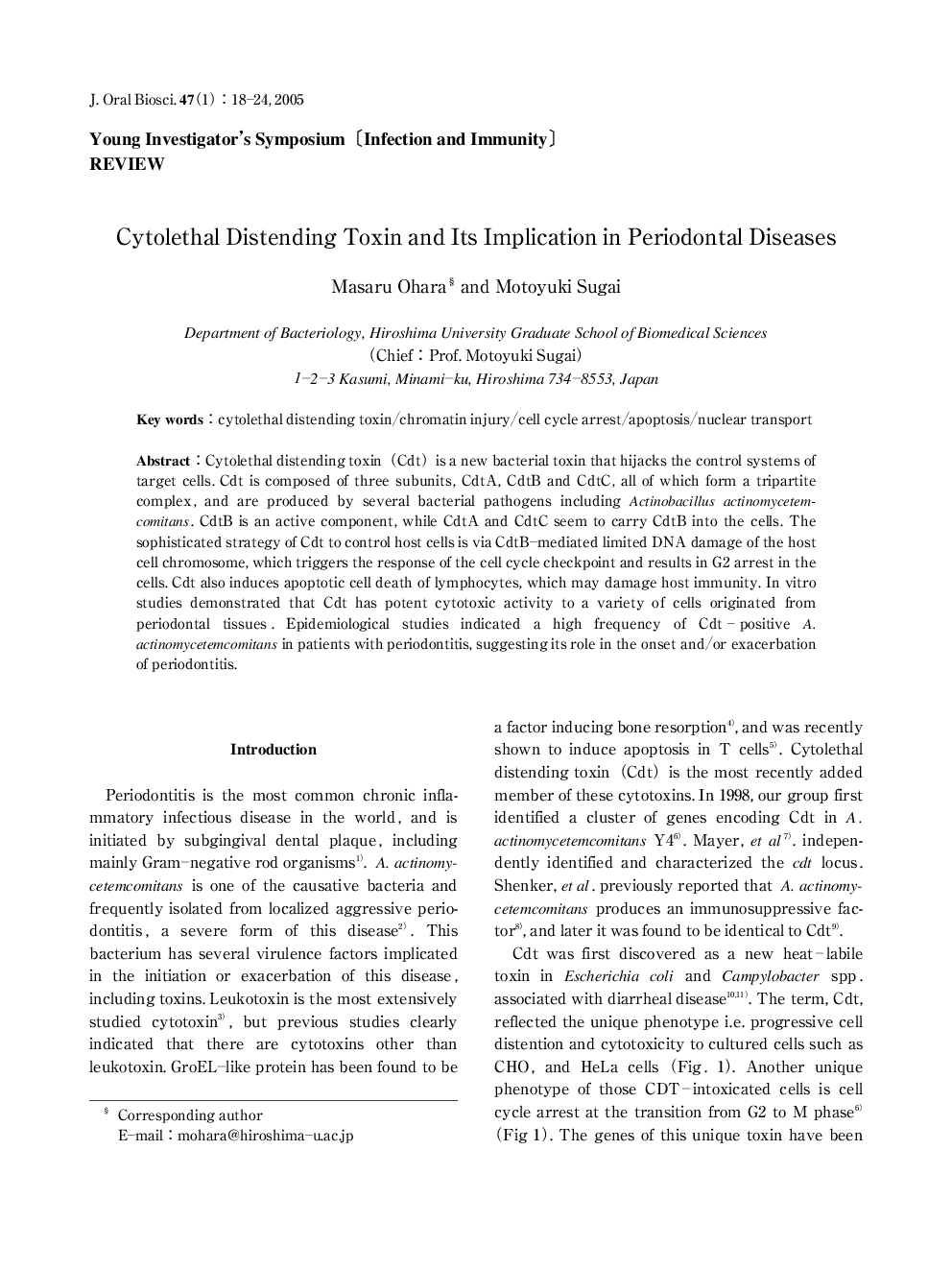| Article ID | Journal | Published Year | Pages | File Type |
|---|---|---|---|---|
| 9103405 | Journal of Oral Biosciences | 2005 | 7 Pages |
Abstract
Cytolethal distending toxin (Cdt) is a new bacterial toxin that hijacks the control systems of target cells. Cdt is composed of three subunits, CdtA, CdtB and CdtC, all of which form a tripartite complex, and are produced by several bacterial pathogens including Actinobacillus actinomycetemcomitans. CdtB is an active component, while CdtA and CdtC seem to carry CdtB into the cells. The sophisticated strategy of Cdt to control host cells is via CdtB-mediated limited DNA damage of the host cell chromosome, which triggers the response of the cell cycle checkpoint and results in G2 arrest in the cells. Cdt also induces apoptotic cell death of lymphocytes, which may damage host immunity. In vitro studies demonstrated that Cdt has potent cytotoxic activity to a variety of cells originated from periodontal tissues. Epidemiological studies indicated a high frequency of Cdt-positive A. actinomycetemcomitans in patients with periodontitis, suggesting its role in the onset and/or exacerbation of periodontitis.
Related Topics
Life Sciences
Biochemistry, Genetics and Molecular Biology
Clinical Biochemistry
Authors
Masaru Ohara, Motoyuki (Chief: Prof.),
